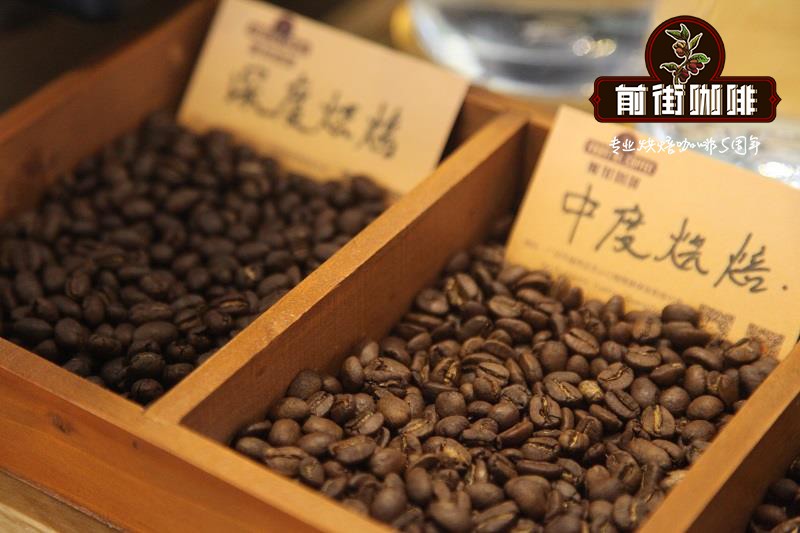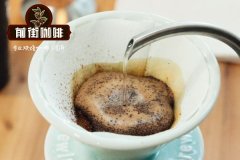World coffee types and characteristics of brewing method difference diagram How to appreciate a good cup of coffee

Professional coffee knowledge exchange more coffee bean information please follow the coffee workshop (Wechat official account cafe_style)
Coffee knowledge > brewing tools > differences in all kinds of coffee brewing
First, teach you how to choose the way to make coffee.
At present, coffee brewing processes are varied all over the world and have their own advantages.
According to coffee taste habits, coffee can be roughly divided into three categories: Italian coffee, American coffee and Japanese coffee, and the differences and advantages and disadvantages of props and brewing methods used are shown in the table below.
Differences between the use of props and brewing methods and the list of advantages and disadvantages
Graphic characteristics of brewing process
Drip coffee machine (American) product and process features:
This kind of coffee machine uses the instant heating method arranged at the bottom of the water tank to heat the water in the tank and drain the hot water to the top of the product through an aqueduct, dripping on the coffee powder in the filter screen (filter paper) container. The water leaks through the filter mesh (filter paper) into the insulation cup below.
Advantages:
Affordable and practical
Easy to use, as long as add water to the water tank, put coffee powder, press the power switch, you can drink coffee
Low cost
The technical requirement of hedge adjustment is not high, and everyone can operate it.
It has the function of heat preservation
Disadvantages:
The smell is not enough and the water temperature is not high.
Due to the limitation of the heating structure, the water should be drained from a water guide to the top of the coffee filter after heating, so the water temperature when exposed to coffee powder is only about 83 ℃, so it is difficult to steam the coffee flavor.
The concentration is not enough and the taste is light.
Water is directly through the coffee powder after filtration leakage, did not soak to the coffee powder, the contact time between water and coffee is cut off, so the coffee products are lighter.
Endless filtration, there is precipitated powder.
The filter screen is generally nylon mesh cloth, the filter is thicker, and the coffee powder can not be filtered out. If the coffee stays for a little longer, there will be precipitated powder at the bottom of the insulation cup.
High pressure coffee machine (Italian) product and process characteristics:
The principle of this kind of espresso machine is to use high-pressure steam to extract coffee within the break time.
Advantages:
The concentration of coffee is high, the taste is heavy, and the special effect foam coffee can be made.
Disadvantages:
However, due to the high steam temperature and coffee under high pressure, the oil, caffeine and tannic acid in coffee are also extracted one by one, which is harmful to human health.
The technical requirement of blending is high, and the coffee powder placement and blending technology must have certain skills, otherwise it will be difficult to make fragrant coffee.
Bitterness, sour and other miscellaneous flavors are heavy because of high temperature and air pressure, extraction under high pressure, and all the flavors in the coffee are extracted one by one.
No heat preservation function
Siphon coffee machine (Japanese style) product and process features:
The characteristic of this product is that after heating by using the lower container, the internal pressure of the closed heating container increases, so that the hot water enters the upper container containing coffee and the coffee is fully soaked, and then stirred with a special stirring tool, so that the coffee extraction concentration is sufficient; when the water completely enters the upper container, the heating stops, at this time, the pressure of the caffeine under the container in the upper container decreases and flows into the lower container, and the coffee brewing ends.
Advantages: high temperature of extraction water and strong coffee
Disadvantages:
The operation is tedious
In the whole blending procedure, each step has always affected the effect of coffee, and it is difficult to make good coffee without certain skills and experience.
No heat preservation function
Italian mocha coffee maker (Italian) product and process features:
The principle is roughly the same as the siphon coffee machine, which also uses the lower heating container to heat in an airtight space, so that after the pressure increases, the water flows quickly from the lower container through the coffee powder to the upper cup; the difference is that the product is provided with a container containing coffee powder in the middle part of the upper and lower container, and the heated water is no longer returned to the heating container after the coffee powder is passed, but in the upper cup.
Advantages:
High temperature of extraction water
Easy to operate and simple
Disadvantages:
Because the water passes through the coffee powder quickly at once, the aroma and concentration of the coffee is not as strong as that of siphon.
Because the temperature is too high, it will scorch the coffee and destroy its original flavor.
No heat preservation
Pure cotton drop funnel (Japanese style) products and process features:
Coffee shop professional adjustment technology:
The utility model is characterized in that the funnel is filtered with pure cotton filter cloth, and there is a container above the glass funnel. As long as the boiling water is injected into the coffee powder step by step, the water injection is stopped after the coffee powder and water are fully soaked, and then water is injected again after the coffee powder is steamed for 20-40 seconds, and the coffee powder is properly soaked in water. After water injection, the coffee powder expands, and after the coffee powder surface collapses, the water is injected again and repeatedly.
Advantages:
The aroma of this kind of coffee is less, the taste is just good, and there are fewer sour leaves and miscellaneous leaves.
Special filter paper or cotton filter cloth can be used for filtering.
Disadvantages:
The adjustment is too cumbersome and troublesome.
No heat preservation
600H automatic brewing machine products and process features:
The principle of brewing and blending is the same as that of Japanese coffee, the product is divided into three layers, the upper container is heated, the heated boiled water is injected into the middle layer coffee powder filter, and the extracted coffee flows into the lower layer for heat preservation; the program sets the automatic grading of running water.
Advantages:
The temperature of heated water is adjustable and controlled.
The number of water injection, the amount of water injection and the interval time are all completed automatically by the program
The program also specially designed that the stewing time of coffee after the first injection of water can be adjusted for 20-40 seconds, and the smell of coffee steamed after the first injection of water for 20 seconds can be better distributed.
Cup adjustment function: according to different coffee content, you can choose 2Jing 3jue 4 cups, the program will automatically complete different times and amount of water injection.
Thermal insulation function, thermal insulation temperature difference is small
The operation is simple and convenient
Disadvantages: only suitable for medium-coarse coffee powder, such as coffee grinding too fine will affect the blending effect, because the fine mesh of pure cotton filter cloth
Teach you how to appreciate a good cup of coffee
The appreciation of coffee
The most commonly used descriptions of the characteristics and flavor of coffee in different places are as follows:
Alcohol degree (body)
Refers to the thick, thick texture behind the entrance of the coffee.
Acidity (acidity)
Different from the sour taste of our daily fruits, this acid is used to describe the bright, fresh and refreshing taste of coffee. Some famous Arabica coffee beans are loved by coffee lovers because of their bright "sour" characteristics.
Bitter taste (bitter)
Bitterness is one of the most obvious features of coffee.
The main factors that affect the bitterness are: varieties (Robbas is more bitter than Arabica)
Place of origin (some coffee products are bitter, such as Sumatra, Java, Indonesia, etc.)
Baking degree (deeper baking is more bitter than shallow baking)
Caffeine content (the higher the caffeine content, the more bitter it will be); the extraction time (the longer the extraction time, the more bitter it will be).
Gandhi (sweet)
Sweet aftertaste is the characteristic of some good coffee. Generally speaking, no one likes "bitter", but the "sweet" and "sour" in the aftertaste are pursued by many people.
Fragrance (aroma)
Refers to the most obvious characteristics of coffee after brewing, including: caramel, fruit, flower, grass and so on.
Flavor (flavor)
Refers to the overall feeling of aroma, sweetness and mellowness.
Wine taste (winy)
Coffee from some places has a wine-like taste, which is essentially a combination of sour taste and high alcohol.
The cup test of coffee
In addition to the appearance and size of coffee, cupping is one of the most important links.
The mainstream tool for cup testing is usually a French filter press, which is carried out by professionals. The methods are as follows:
Put the freshly roasted and ground ration coffee powder into a wide-mouthed cup and smell its dry aroma (dry fragrance).
Then pour into boiled water with a suitable temperature (about 95 °C) and smell its wet aroma (wet aroma).
Then use a cup spoon to pick up some coffee solution and vigorously inhale the mouth (the coffee solution should be spread as far as possible), carefully identify the original taste of the coffee, and then spit it out.
Finally, wait until the coffee temperature naturally drops to room temperature before making the final taste.
Third, teach you how to analyze the ingredients that will affect the human body in coffee.
Caffeine:
Caffeine is the most eye-catching of all the ingredients of coffee. Its function is very extensive, and it will affect the brain, heart, blood vessels, gastrointestinal tract, muscle, kidney and other parts of the human body. An appropriate amount of caffeine stimulates the cerebral cortex, promotes sensation, judgment, memory and emotional activity, makes the myocardial function more active, dilates blood vessels, enhances blood circulation, and improves metabolic function. Caffeine can also reduce muscle fatigue and promote digestive juice secretion. In addition, because it also promotes kidney function and helps the body to expel excess sodium ions from the body, caffeine does not accumulate in the body like other anesthetic and excitatory substances and will be excreted in about two hours.
Tannic acid:
The refined tannic acid will turn into a yellowish powder, which can easily blend into the water. Once boiled, it will decompose and produce pyrosylic acid, making the coffee taste worse.
Fat:
The fat in coffee plays a very important role in the smell of caffeine. After analysis, it is found that there are many kinds of fats in coffee, the most important of which are acidic fat and volatile fat. Acidic fat means that fat contains acid, and its strength varies according to the type of coffee. Volatile fat is the main source of coffee aroma. It emits 40 kinds of aromatic substances, which are very complex and subtle.
Sugar:
Raw coffee beans contain about 8% sugar. After baking, most of the sugar will be converted to caramel, bringing a unique brown to the coffee.
Important Notice :
前街咖啡 FrontStreet Coffee has moved to new addredd:
FrontStreet Coffee Address: 315,Donghua East Road,GuangZhou
Tel:020 38364473
- Prev

What is the origin of cat shit coffee? The origin of cat poop coffee and hand brewing parameters
Professional coffee knowledge exchange More coffee bean information Please pay attention to coffee workshop (Weixin Official Accounts cafe_style) Origin of cat feces coffee: cat feces coffee is a rare Arabica coffee bean, produced in the central mountainous area of Asaki, Sumatra, Indonesia, is an extremely rare unique coffee. Origin of cat poop coffee: Arabica coffee started in Sumatra, Indonesia from the sixteenth century
- Next

Introduction to the types and characteristics of Coffee in several Cafe Coffee shops
Professional coffee knowledge exchange more coffee bean information Please pay attention to the coffee workshop (Wechat official account cafe_style) Today's young people no longer seem to be popular to talk about making tea at home at friends' gatherings, but to go out to the coffee shop to drink coffee and chat. The coffee shop also seems to be able to stimulate a certain atmosphere. In the coffee shop, we often see several kinds of coffee.
Related
- Detailed explanation of Jadeite planting Land in Panamanian Jadeite Manor introduction to the grading system of Jadeite competitive bidding, Red bid, Green bid and Rose Summer
- Story of Coffee planting in Brenka region of Costa Rica Stonehenge Manor anaerobic heavy honey treatment of flavor mouth
- What's on the barrel of Blue Mountain Coffee beans?
- Can American coffee also pull flowers? How to use hot American style to pull out a good-looking pattern?
- Can you make a cold extract with coffee beans? What is the right proportion for cold-extracted coffee formula?
- Indonesian PWN Gold Mandrine Coffee Origin Features Flavor How to Chong? Mandolin coffee is American.
- A brief introduction to the flavor characteristics of Brazilian yellow bourbon coffee beans
- What is the effect of different water quality on the flavor of cold-extracted coffee? What kind of water is best for brewing coffee?
- Why do you think of Rose Summer whenever you mention Panamanian coffee?
- Introduction to the characteristics of authentic blue mountain coffee bean producing areas? What is the CIB Coffee Authority in Jamaica?

